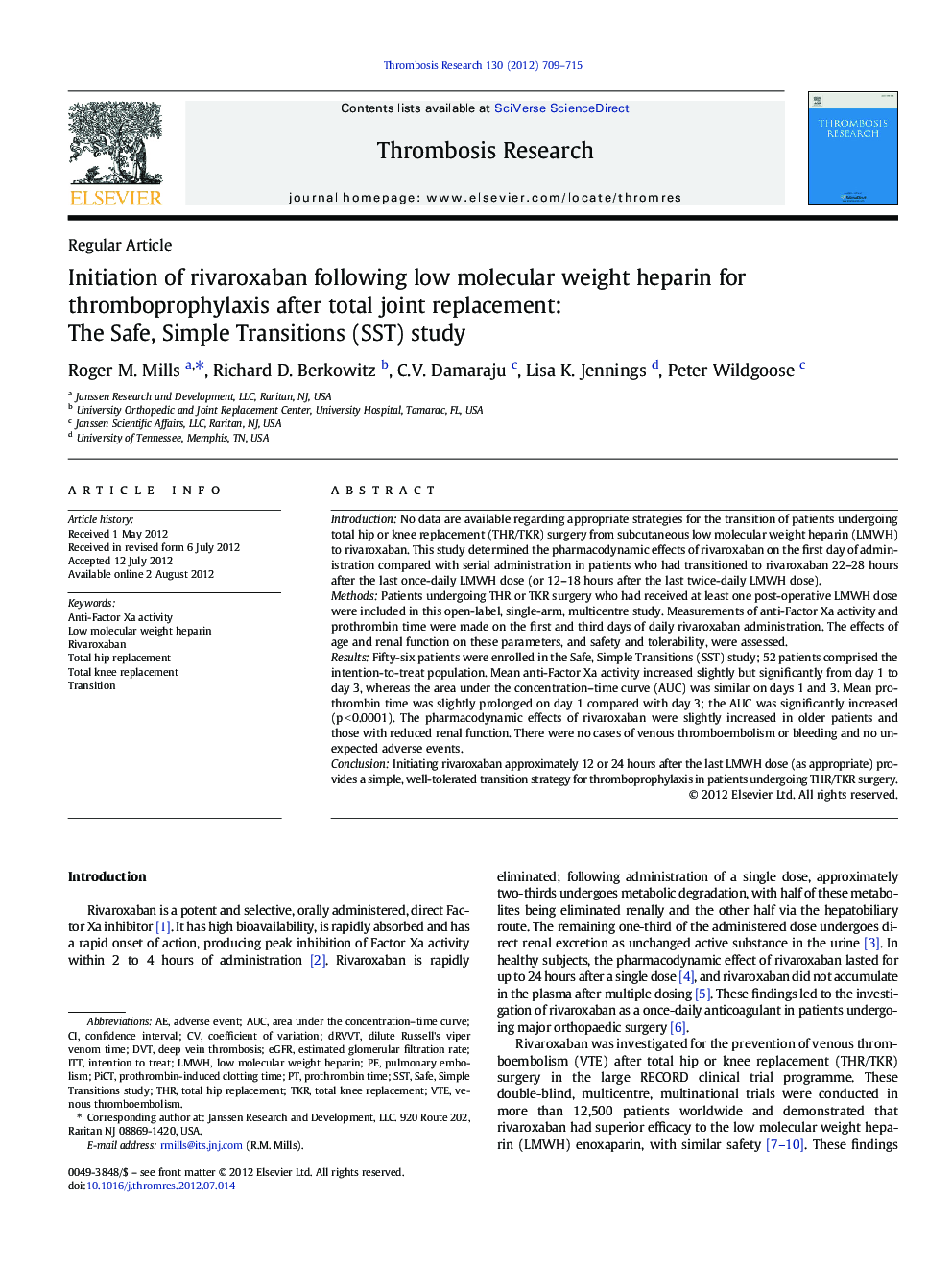| Article ID | Journal | Published Year | Pages | File Type |
|---|---|---|---|---|
| 3027587 | Thrombosis Research | 2012 | 7 Pages |
IntroductionNo data are available regarding appropriate strategies for the transition of patients undergoing total hip or knee replacement (THR/TKR) surgery from subcutaneous low molecular weight heparin (LMWH) to rivaroxaban. This study determined the pharmacodynamic effects of rivaroxaban on the first day of administration compared with serial administration in patients who had transitioned to rivaroxaban 22–28 hours after the last once-daily LMWH dose (or 12–18 hours after the last twice-daily LMWH dose).MethodsPatients undergoing THR or TKR surgery who had received at least one post-operative LMWH dose were included in this open-label, single-arm, multicentre study. Measurements of anti-Factor Xa activity and prothrombin time were made on the first and third days of daily rivaroxaban administration. The effects of age and renal function on these parameters, and safety and tolerability, were assessed.ResultsFifty-six patients were enrolled in the Safe, Simple Transitions (SST) study; 52 patients comprised the intention-to-treat population. Mean anti-Factor Xa activity increased slightly but significantly from day 1 to day 3, whereas the area under the concentration–time curve (AUC) was similar on days 1 and 3. Mean prothrombin time was slightly prolonged on day 1 compared with day 3; the AUC was significantly increased (p < 0.0001). The pharmacodynamic effects of rivaroxaban were slightly increased in older patients and those with reduced renal function. There were no cases of venous thromboembolism or bleeding and no unexpected adverse events.ConclusionInitiating rivaroxaban approximately 12 or 24 hours after the last LMWH dose (as appropriate) provides a simple, well-tolerated transition strategy for thromboprophylaxis in patients undergoing THR/TKR surgery.
